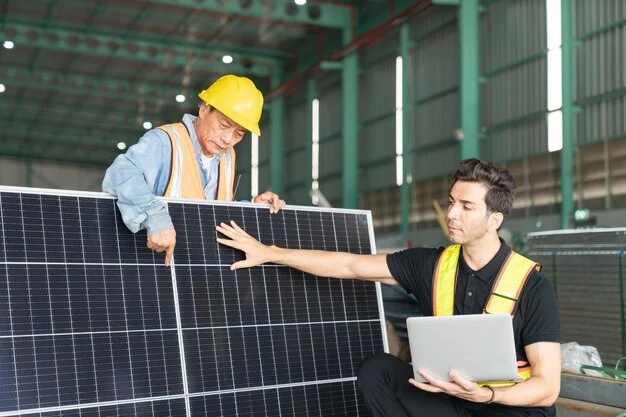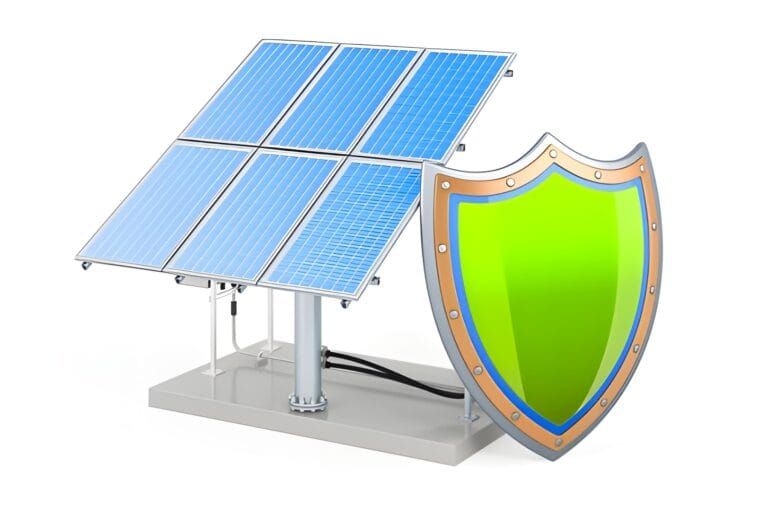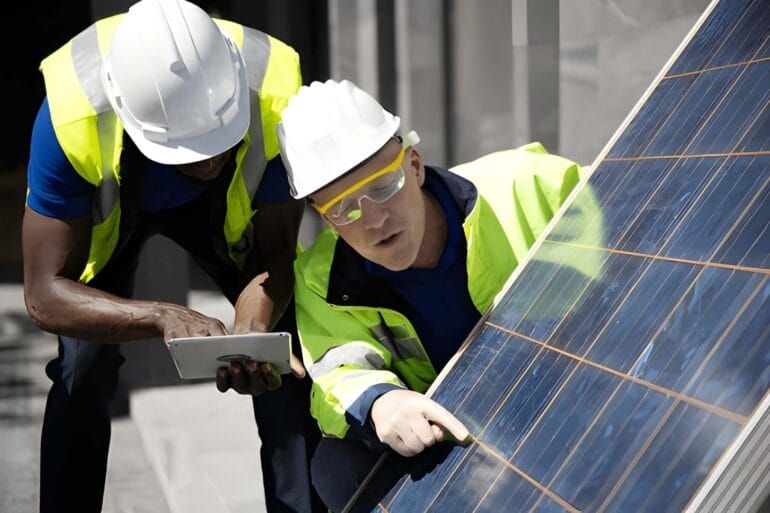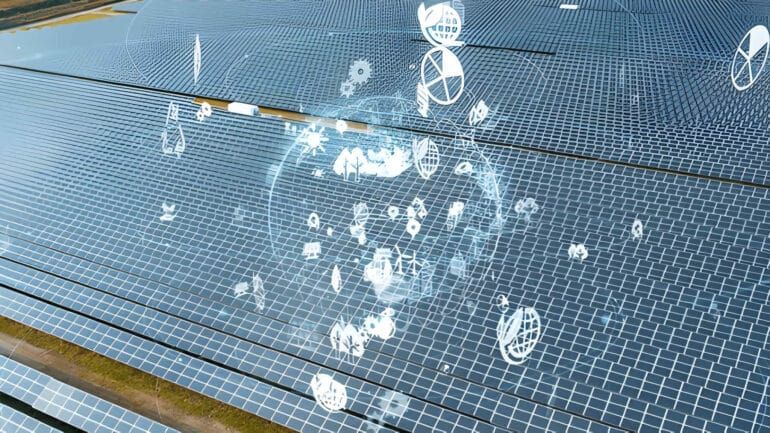Understanding Solar Panels
Solar panels are crucial components of solar energy systems, playing a pivotal role in converting sunlight into usable electricity through the photovoltaic effect. Understanding the fundamental aspects of solar panels is essential for individuals and businesses looking to harness solar power efficiently.
What are Solar Panels?
Solar panels, also referred to as photovoltaic (PV) panels, consist of interconnected solar cells made primarily from silicon, a semiconductor material. These cells absorb photons from sunlight, generating an electric current as a result of the photovoltaic effect. Solar panels are designed to capture sunlight during daylight hours, converting it into direct current (DC) electricity, which can then be converted into alternating current (AC) electricity for use in homes, businesses, and industries.
Types of Solar Panels
Solar panels are available in various types, each with distinct characteristics that influence their efficiency, durability, and suitability for different applications:
Monocrystalline Solar Panels
Monocrystalline solar panels are made from single-crystal silicon, which is formed into bars and cut into wafers. These panels are recognized for their high efficiency rates, typically ranging from 15% to 22%. They have a uniform appearance with a dark hue due to the high purity of silicon used in their construction. Monocrystalline panels are space-efficient, making them ideal for rooftops or areas with limited space where maximizing power output per square meter is crucial.
Polycrystalline Solar Panels
Polycrystalline solar panels are manufactured using silicon crystals that are melted together to form ingots, which are then cut into wafers. These panels have a speckled blue appearance due to the multiple silicon crystals within each cell. While slightly less efficient than monocrystalline panels (typically 13% to 17% efficiency), polycrystalline panels are more cost-effective to produce. They offer good performance and durability, making them a popular choice for residential and commercial installations.
Thin-Film Solar Panels
Thin-film solar panels are composed of one or more layers of photovoltaic material deposited onto a substrate such as glass, metal, or plastic. These panels are lightweight, flexible, and easier to manufacture in large quantities compared to crystalline silicon panels. Thin-film technology includes various materials such as amorphous silicon (a-Si), cadmium telluride (CdTe), and copper indium gallium selenide (CIGS). While generally less efficient (typically 10% to 15% efficiency) than crystalline silicon panels, thin-film panels excel in applications where weight, flexibility, or aesthetics are important factors.
Factors Influencing Solar Panel Costs
When considering the cost of solar panels in Australia, several key factors come into play, each influencing the overall price tag:
Quality and Efficiency
The quality and efficiency of solar panels significantly impact their pricing. High-quality panels, often with better efficiency ratings, tend to be more expensive upfront but can yield greater long-term savings due to their enhanced performance and durability. These panels typically utilize advanced technologies such as monocrystalline silicon, which enhances their efficiency in converting sunlight into electricity.
Size and Wattage
The physical size and wattage capacity of solar panels directly affect their cost. Larger panels with higher wattages typically cost more due to the increased materials and higher power output they provide. For residential installations, panel sizes usually range from 250 to 400 watts per panel. The choice of panel size depends on factors such as available roof space and the desired energy production capacity. Larger systems with higher wattage panels are often preferred for commercial installations where energy demands are higher.
Brand and Manufacturer
The brand and manufacturer of solar panels also play a crucial role in determining their price. Established brands with a reputation for quality and reliability may command higher prices compared to lesser-known manufacturers. However, opting for reputable brands often ensures better warranty support and overall panel performance. Certain manufacturers may specialize in particular types of panels, such as bifacial or integrated solar tiles, which can impact pricing based on their unique features and applications.
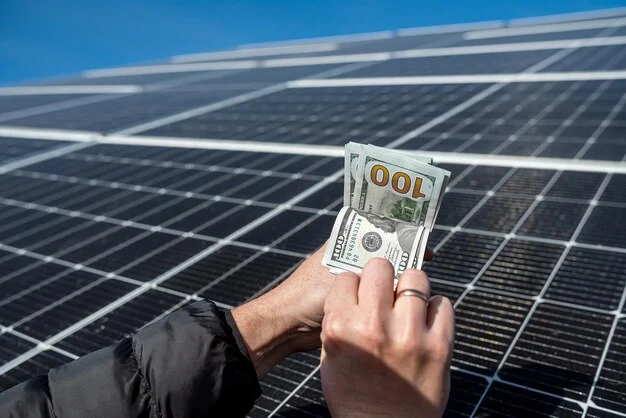
Installation Complexity
The complexity of installation can significantly influence the overall cost of solar panels. Factors such as roof type, accessibility, and any additional electrical work needed can add to the installation costs. Installations requiring more labor or specialized equipment may also incur higher expenses.
For example, installations on tile roofs or roofs with multiple angles may require more time and effort compared to installations on flat or metal roofs. Proper installation is crucial not only for optimal performance but also for ensuring safety and compliance with local regulations.
Government Rebates and Incentives
Government rebates, incentives, and feed-in tariffs vary across Australian states and territories. These financial incentives can significantly reduce the upfront cost of installing solar panels, making renewable energy more accessible and affordable for homeowners and businesses. Examples include Small-scale Technology Certificates (STCs), which provide a point-of-sale discount for eligible installations, and feed-in tariffs that reimburse solar system owners for excess electricity fed back into the grid.
Understanding and taking advantage of available rebates can make solar energy a financially attractive option, enhancing the return on investment over the system’s lifetime.
Average One Solar Panel Cost in Australia
When considering the cost of solar panels in Australia, it’s essential to delve into both national averages and regional disparities.
National Average Cost
The national average cost of solar panels in Australia serves as a benchmark for understanding pricing trends across the country. This figure encapsulates various factors influencing costs, such as technological advancements, market demand, and government incentives aimed at promoting renewable energy adoption.
State-wise Variations
Solar panel costs can vary significantly from state to state in Australia, influenced by local factors including climate conditions, government policies, and market competition. Understanding these regional variations helps prospective buyers tailor their investment decisions to suit their specific geographical and financial contexts.
New South Wales
In New South Wales (NSW), solar panel costs reflect not only the national trends but also local incentives and regulatory frameworks. As one of Australia’s most populous states, NSW has seen substantial growth in solar installations, impacting both supply and demand dynamics.
Victoria
Victoria’s solar panel market is shaped by initiatives like the Victorian Solar Homes Program, which aims to make solar power more accessible through rebates and interest-free loans. These incentives play a crucial role in determining the overall cost-effectiveness of solar investments in the state.
Queensland
Queensland boasts abundant sunshine, making it a prime location for solar energy generation. The state’s solar panel costs are influenced by its sunny climate and government schemes aimed at supporting renewable energy uptake among residents and businesses.
South Australia
South Australia leads the nation in renewable energy adoption, with solar panels playing a pivotal role in the state’s energy mix. The Solar Panel cost in South Australia reflects its commitment to sustainability and its proactive stance on renewable energy policies.
Western Australia
In Western Australia (WA), solar panel costs are influenced by the state’s vast geographical spread and unique energy market dynamics. Understanding the regional factors affecting WA’s solar panel pricing is crucial for prospective buyers in the state.
Tasmania
Tasmania’s solar panel market differs from mainland Australia due to its cooler climate and smaller population. Local energy demands and environmental considerations unique to the island state influence the solar panel cost in Tasmania.
Northern Territory
The Northern Territory (NT) presents its own set of challenges and opportunities regarding solar panel costs, shaped by its remote locations and distinct energy requirements. Understanding NT-specific factors is essential for evaluating solar investments in this region.
Australian Capital Territory
As Australia’s capital, the Australian Capital Territory (ACT) has implemented ambitious renewable energy targets, influencing the cost dynamics of solar panels. Local incentives and policies support ACT residents in adopting solar energy solutions that align with sustainability goals.
Additional Costs Involved
Installation Costs
Installation costs are a significant component of the total expenditure when installing solar panels in Australia. These costs can vary based on factors such as the size of the solar system, the complexity of the installation (e.g., roof type, accessibility), and any additional electrical work required. On average, installation costs typically range from AUD 1,000 to AUD 3,000 per kilowatt (kW) of solar capacity installed. It’s advisable to obtain multiple quotes from reputable installers to ensure competitive pricing and quality service.
Maintenance Costs
One of the appealing aspects of solar panels is their minimal maintenance requirements. Generally, solar panels are durable and require little upkeep beyond occasional cleaning to remove dust and debris. However, it’s essential to budget for potential maintenance costs over the panel’s lifespan, which can include periodic inspections, inverter maintenance or replacement, and repairs in case of damage from severe weather or accidents.
Battery Storage Costs
Battery storage systems complement solar panels by storing excess energy generated during the day for use during periods of low sunlight or high energy demand. While the initial cost of battery storage systems can be substantial, prices have been decreasing as technology advances and demand increases. On average, battery storage costs in Australia range from AUD 800 to AUD 2,000 per kilowatt-hour (kWh) of storage capacity. The decision to invest in battery storage should consider factors such as energy usage patterns, blackout risk, and eligibility for government incentives.
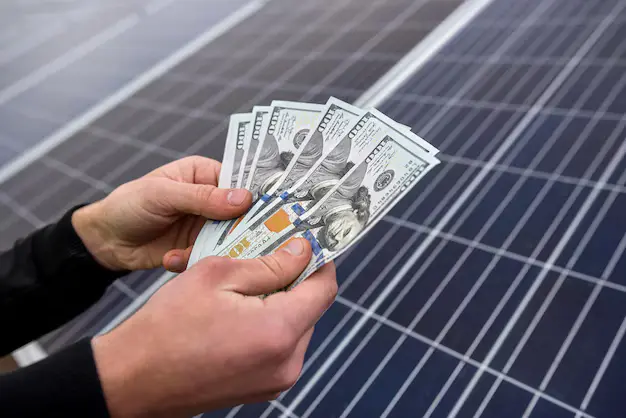
Return on Investment (ROI) with Solar Panels
Investing in solar panels offers substantial returns, both financially and environmentally, making it a compelling choice for many Australians.
Financial Savings
The primary financial benefit of solar panels lies in the significant reduction in electricity bills. By generating your electricity from sunlight, homeowners and businesses can lower their dependence on the grid and shield themselves from rising electricity costs. Depending on factors such as solar system size, local electricity rates, and consumption patterns, solar panel owners can achieve payback periods typically ranging from 3 to 7 years.
Environmental Benefits
Beyond financial gains, adopting solar energy contributes positively to the environment by reducing greenhouse gas emissions. Solar panels generate clean, renewable energy without producing harmful pollutants or carbon dioxide, thereby mitigating the impact of conventional electricity generation on climate change. This environmental benefit aligns with Australia’s commitment to sustainability and carbon reduction goals, making solar energy an integral part of the country’s renewable energy landscape.
Choosing the Right Solar Panel
Selecting the right solar panel involves several key considerations tailored to your specific needs. Factors such as efficiency, durability, and warranty are crucial. Understanding your energy consumption patterns and available roof space will also influence your choice.
Considerations for Residential Use
For residential applications, efficiency and cost-effectiveness are paramount. Opt for panels that offer high efficiency ratings to generate more electricity per square meter of roof space. Consider factors like aesthetics, especially if appearance matters to you. Ensure compatibility with your existing electrical setup and consult with a qualified installer to determine the optimal placement for maximum sunlight exposure.
Considerations for Commercial Use
Commercial installations require scalability and robust performance. Choose panels known for their reliability and ability to withstand high-volume electricity production over extended periods. Evaluate potential savings through commercial rebates and incentives, and factor in long-term maintenance costs when selecting panels. Engage with commercial solar installers experienced in large-scale projects to ensure seamless integration and compliance with regulatory requirements.
Conclusion
Investing in solar panels in Australia offers significant long-term benefits in terms of energy savings and environmental impact. While initial Solar Panel costs may vary based on factors like panel type, location, and installation complexity, the return on investment through reduced electricity bills and potential government incentives makes solar energy a viable and sustainable choice for both residential and commercial applications.
FAQs
Are solar panels worth the investment in Australia?
Yes, solar panels can be a worthwhile investment in Australia due to abundant sunlight, favorable government incentives, and potential long-term savings on electricity bills.
How long do solar panels typically last?
Most solar panels come with warranties ranging from 25 to 30 years, and their actual lifespan often exceeds these warranty periods with proper maintenance.
Do solar panels require a lot of maintenance?
Solar panels generally require minimal maintenance. Routine inspections for debris and cleaning as needed, usually with water and a soft brush, are typically sufficient to ensure optimal performance.
